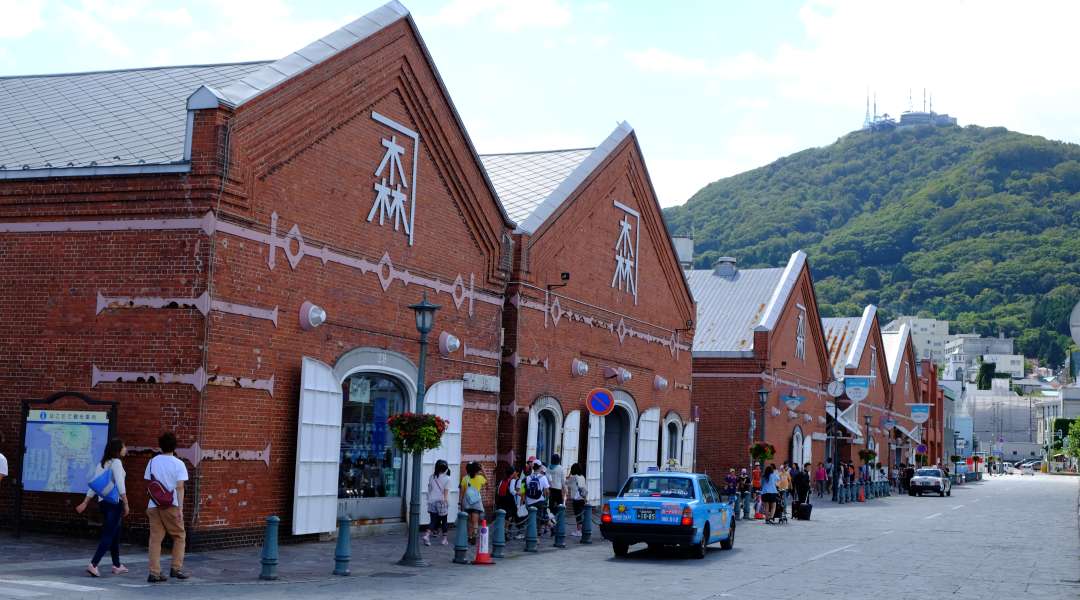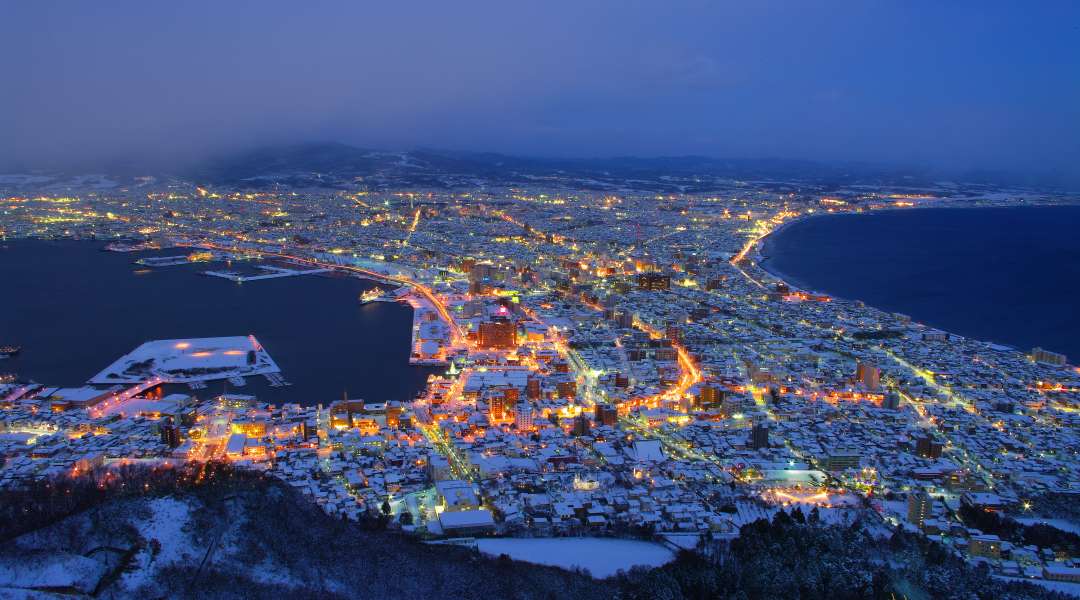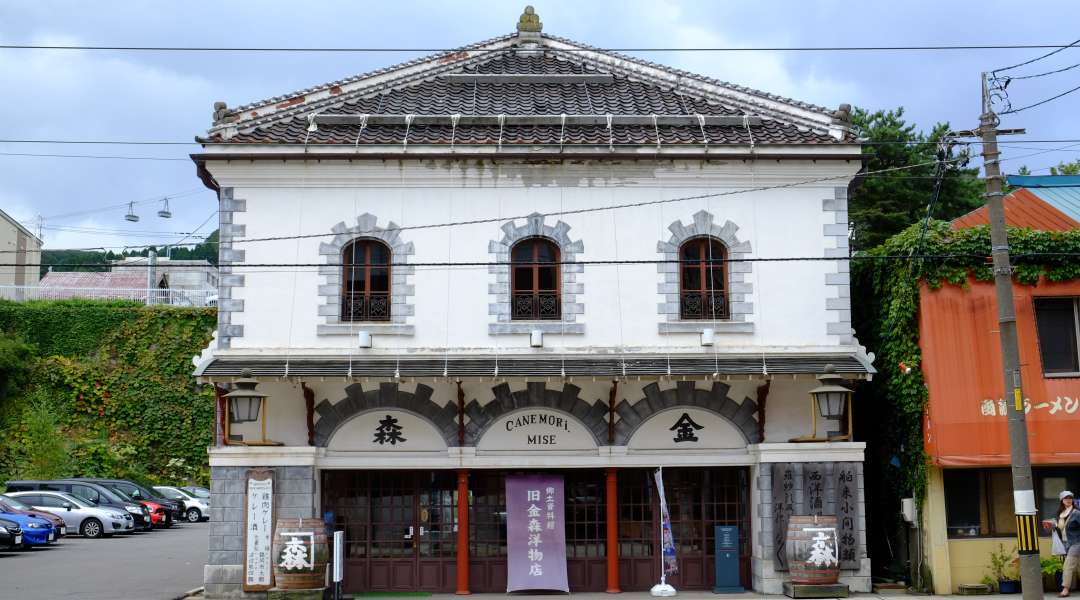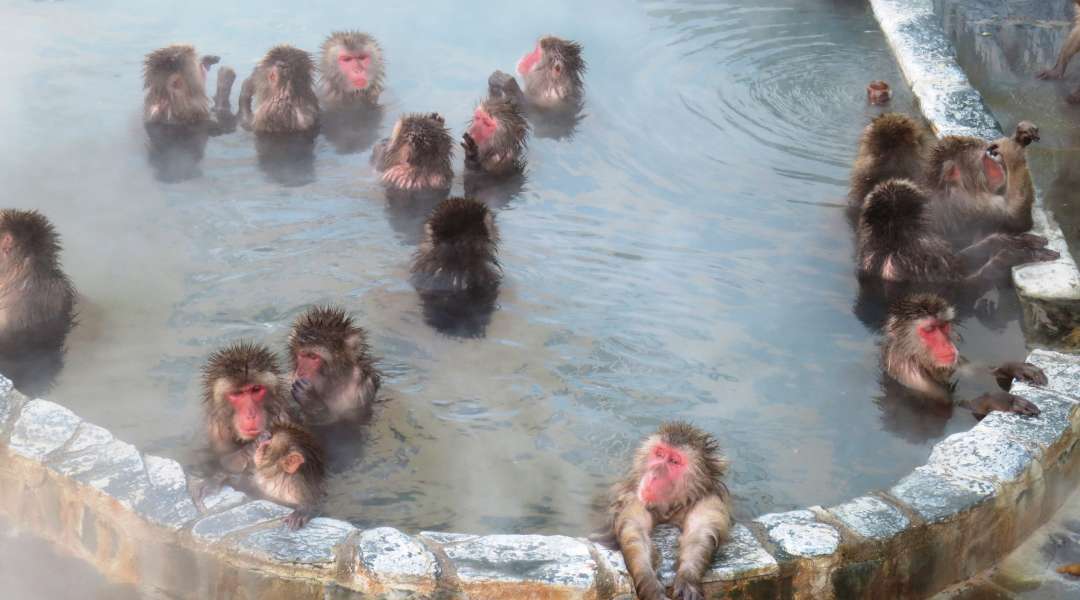
A star-shaped fortress, squid fishing, a Michelin-starred night view, onsen monkeys and fantastic food - all this and more is on offer in Hakodate.
Located on the southern tip of Hokkaido island, the harbour city of Hakodate is the gateway between Japan’s main island of Honshu and Hokkaido in the north, and makes a great first or last destination on the way into or out of Hokkaido, either side of your bullet train up from Tokyo!
Historically, many overseas shipping and trading companies set up their offices in Hakodate, building warehouses and residences in foreign styles of architecture. In fact, Hakodate is famous for being the perfect place for a relaxed seaside stroll, as well as for its stunning night view, its snow monkeys and its fresh seafood like squid and crab.
The sights you’ll want to see in Hakodate are all easily accessible using transport starting from Hakodate Station, so choosing a hotel near the main station is a good idea.
The route begins at Hakodate Station and has several optional end points depending on how long you have in Hakodate and where you’re going next.
1) Visit a Star-shaped Fortress [20-30 minutes]
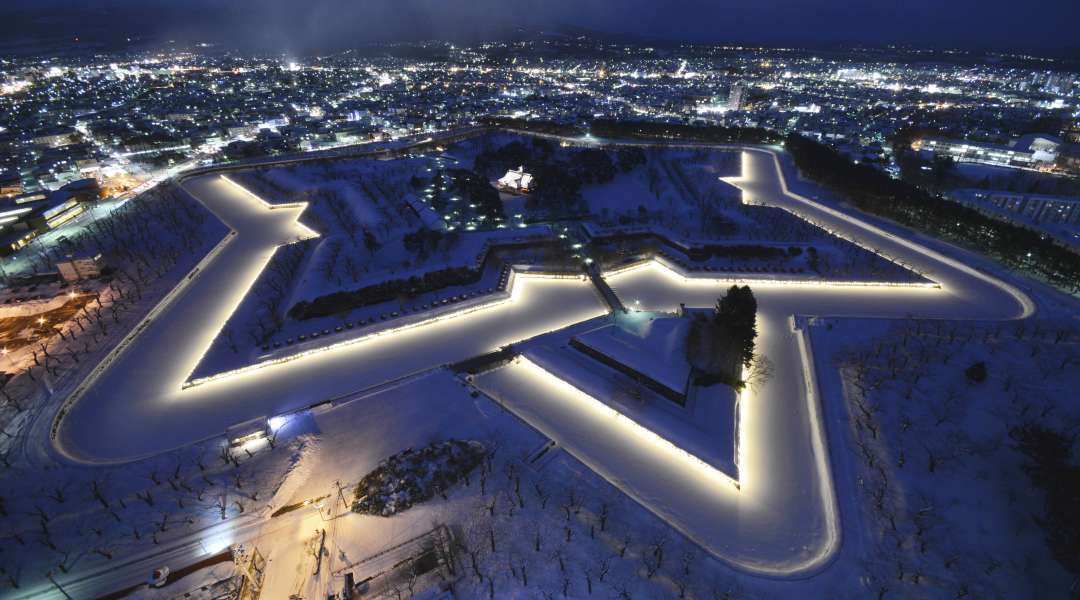
Japan’s first western-style fortress, Fort Goryokaku was constructed in the late Edo Period (mid 1800s) to defend Hakodate against the threat of imperialist powers. To get there, hop on a Hakodate City Tram (line no.2 or no.5) for the 20-30 minute ride from Hakodate Eki-mae station to either Goryokaku-mae Station or Keisatsusho-mae Station. From the former it is a 10-minute walk more or less to Fort Goryokaku, while from the latter it is just a few minutes east.
The most photogenic bird’s eye views of the impressive star-shaped citadel can be had from the upper observation deck at the top of Goryokaku Tower at a height of 90 metres above the ground (900 yen / £6.30 for adults; open 8am-7pm or 9am-6pm depending on the season).
In the 1910s, the fort and its surrounding grounds were turned into a public park, including the planting of over 1600 cherry blossom trees. Time your visit for early May to capture the fortress outlined in clouds of fluffy pink blossoms!
2) Visit Retro Red-brick Warehouses [20 minutes]
Once you’ve refuelled at Hakodate’s premier burger outlet, stagger a few minutes east towards the bay to the Kanemori Red Brick Warehouses, just a few minutes walk northwest of Jujigai tram stop.
Hakodate was one of the first Japanese cities to open up to foreign trade after Japan’s self-imposed period of isolation ended in the 1850s. Opening in 1850,
Hakodate Port was one of Japan’s first international trading ports, along with two other more famous ports that you may have heard of - Yokohama and Nagasaki.
Many historical buildings from that time have been preserved, including the Kanemori warehouses, a row of renovated redbrick warehouses lining the bay area dating from the late 1800s. The first commercial warehouses in Hakodate, they have witnessed many different periods of history come and go. Nowadays they no longer serve their original purpose, but rather house a pleasant shopping and entertainment complex with an enviably retro atmosphere thanks to its location.
The complex consist of three areas: check out the unique shops and daily flea markets at
Kanemori Yobutsu-kan, first opened over 100 years ago as a shop selling exotic “Western” goods; the beer hall, handmade rice cracker shop, and
Sen’en Kobo, which offers workshops for just 1000 yen (£7), in Hakodate Historical Plaza; and the scenic bay views from
Bay Hakodate, which are particularly nice when the bayside is illuminated at night.
3) Go Old-Building Spotting in Motomachi [30 minutes]
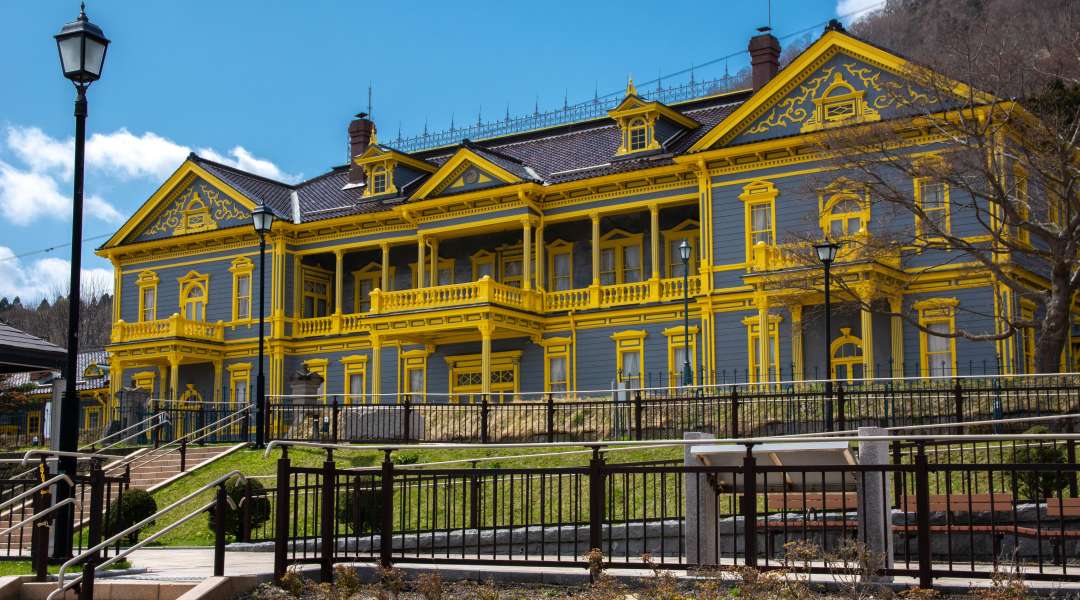
Next, venture out to explore the attractive old buildings in Hakodate’s Motomachi district, a former residential area of foreign traders boasting many well-preserved beautiful old buildings. After Hakodate opened up to foreign trade in the late 1800s, an influx of traders from other countries such as Russia, China and western countries arrived. They settled in the hillside Motomachi district, where they constructed many foreign- and western-style buildings as their residences and places of business.
The main area takes about 30 minutes to traverse on foot end to end from east to west, and the whole area is dotted with old buildings, so you can explore the sights in any order. However, we recommend starting from the Kanemori warehouses and working your way round in a loop anti-clockwise, going as far west as
Motomachi Park and ending in the south at
Mt Hakodate Ropeway Station.
On the way, you can see and photograph many of Hakodate’s beautiful and well-preserved old buildings, many of which have considerable historical and cultural importance. If you’re strapped for time, or don’t fancy walking too far, then make a beeline for the two major showstoppers: the
Hakodate Christ Orthodox Church and the
Old Hakodate Public Hall (both pictured).
If, on the other hand, you’re up for pounding the streets, put your best foot forward and spend a few happy hours working your way through the Old Hakodate Branch Office of Hokkaido, the Old British Consulate, Meijikan (Former Hakodate Post Office), several Christian churches - and the
oldest concrete electricity pole in Japan!
4) Enjoy the Michelin-starred Night View from Mt Hakodate [10 minutes]
Time your walk to end towards dusk at the foot of the ropeway going up to the top of Mt. Hakodate. If you’ve ended your exploration Motomachi at Mt Hakodate Ropeway Station, you’ll be ideally placed to whizz up to the summit on the Hakodateyama Ropeway (departures every 15 minutes, return ticket 1280 yen / £9). Alternatively, buses operate between Hakodate Station and the summit several times per hour in the evening (30 minutes, 400 yen / £2.80).
Bid farewell to Hokkaido by gazing at the spectacular night view from the summit - said to be one of Japan’s “top three night views”. It’s also the holder of an impressive three Michelin stars. When viewed from the top of Mt Hakodate, the sparkling multi-coloured lights below make an interesting and unique hourglass shape due to Hakodate’s location on a peninsula with water on either side. The view is said to be at its best around 30 minutes after sunset.
Once you’ve had your fill of Hakodate’s shimmering lights, take the ropeway back down to the bottom of the mountain and either catch a taxi (10 minutes), walk and take the tram (10 minutes walk to Jujigai Station; 5 minutes by tram from there) or walk (20-25 minutes) back to your hotel near Hakodate Station.
5) Feast on Seafood at Morning Market [30 minutes]

Make sure you get up early and bright-eyed and bushy-tailed for a mouthwatering seafood breakfast at Hakodate’s famous Morning Market (Hakodate Asaichi, 5am-noon). Assuming you’ve chosen to stay at a hotel near the station, it should only take a few minutes to reach the market. Bonus points if you can wake up in time for the lively bidding at the 5am Squid Auction (just make sure you book in advance, or book a guide to help you in advance).
If you’re anything like us, your stomach will already be growling, so head to Donburi Yokocho Ichiba, a restaurant arcade inside the market with about 20 shops. It’s a slightly long-winded name, but don’t let that put you off - this is where you’ll get to stuff your face on the must-eat local delicacy, kaisendon (seafood rice bowl), bowl of steaming fresh white rice topped with unbelievably fresh seafood - you can’t leave Hakodate without sampling it! Salmon roe, sea urchin and crab are some of the most popular toppings. Alternatively, if you don’t mind working harder for your food, then you can try your hand at squid-fishing - the chef will turn whatever you catch into fresh squid sashimi.
The bustling market spans a few blocks of the city, so after you’ve broken your fast, spend a happy hour or two browsing the 250 or so shops and stalls selling a variety of fresh products and delectable Hokkaido produce such as melons and other local fruit and vegetables as well as seafood such as crab, sea urchin, and salmon roe.
6) Sink into Hakodate's local 'kominka' café culture [30-90 minutes]
Now that you’ve had the main course, it’s time to satisfy that sweet tooth! Before you hop on a train from the station to go and take a reinvigorating nighttime bath at nearby Yunokawa Onsen, take some time to explore Hakodate's unique 'kominka café' culture.
Nestled between the amazing architecture of the Motomachi district, with Mt Hakodate at your back and views over Hakodate Bay, this collection of cafés are the perfect way to experience Hakodate's one-of-a-kind history and architecture, whilst getting to know the locals!
The word 'kominka' literally means 'old house' and refers to traditional Japanese properties that are being bought up and repurposed in order to preserve their impressive aesthetic. In Hakodate, this has meant a boom in tearooms, ice cream parlours and cafés in cozy historic settings that blend both the beauty of traditional Japanese building techniques and the majesty of turn of the century western architecture - something it's hard to see anywhere else in Japan.
Kick off your exploration with a mooch around the
Hakodate Kogeisha Gallery, a craft art gallery and pottery studio located at Jujigai tram stop, before picking up some traditional Japanese sweets from the likes of
Kingyo Café (a wooden shopfront café also selling antiques),
Sabou Kikuizumi (a quaint wooden tea room with an 'irori', sunken Japanese hearth) and
Sabou Mukuri (a traditional Japanese storehouse from the Meiji period). Once the sweettooth has been satisfied, rest your legs with a warming cup of tea at the
Sabou Hishii (a Meiji-era and Taisho-era complex serving as a teashop and kimono workshop), the
Kyuchaya-tei (a Japanese 'machiya' storefront near the bay with a mixture of wood-panelling and western antique furniture inside) or
Café D'ici (a more modern hidey-hole with a wood-panelled exterior on the way to Mt Hakodate).
And it doesn't stop there! If you're looking for something more filling, try MOSSTREES for a meal in a former fisherman's house, or the Tea Shop Yuhi for sunset views over Hakodate Bay. If you're thirsty for a tipple, make your way to Café Yamajo, a cozy traditional bar and location for Japanese film shoots, or swing by Mario Doll for local ice cream of all flavours, and Marutama Goya for a fascinating blend of Russian and Japanese cuisine!
7) Take a Relaxing Dip at Yunokawa Onsen [20-40 minutes]
If you’ve still got time before you catch your train out of Hakodate, decamp to Yunokawa Onsen, a large hot spring resort with an array of inns and hotels in the east of Hakodate. To get there, ride the bus along the coast for 20 minutes or the tram (no.5) through the city for 40 minutes. If you’ve any plans to fly into or out of Hakodate Airport, then the hot spring is ideally placed for a quick dip on your way to or from the airport.
While you’re here you have a few options for how to enjoy Yunokawa’s soothing mineral waters. If you’re dipping your toe into the hot spring bathing experience for the first time, then why not start out with a relaxing “ashiyu” footbath - you get to keep your clothes on! There is a
free public footbath right in front of Yunokawa Onsen tram stop. Pop your socks and shoes off and slip your feet into the warming water, then tune out and relax as you watch the trams come and go.
For those who’re happy to flaunt their birthday suit, many of the baths in Yunokawa just a stone’s throw from the ocean’s edge - meaning you get to enjoy the unusual mix of pampering in-house bathing combined with
glorious ocean views. From summer to autumn, the ocean twinkles with the lights of huge tungsten lamps on Hakodate’s fleet of fishing boats as they trawl the straits in search of the succulent squid for which the town is famous.
The
Hakodate City Tropical Botanical Garden is home to some 100 free-range
Japanese macaques (snow monkeys). Watch them immerse themselves in the steaming mineral water from December 1st through the beginning of May - those expressions of pure bliss are really something else! The gardens are 15 minutes walk south of Yunokawa tram stop (300 yen / £2.10, open 9:30am-6pm or 4:30pm in winter).
For more info about getting to Hakodate and onwards travel into Hokkaido, check out our specific page.
To stay up to date with all the latest happenings in Japan follow us on Facebook or Twitter.


